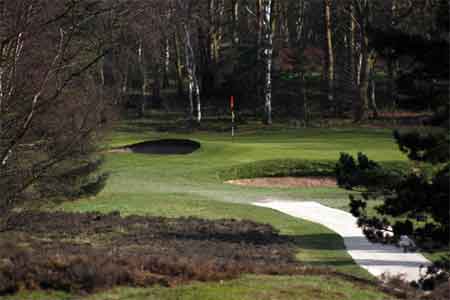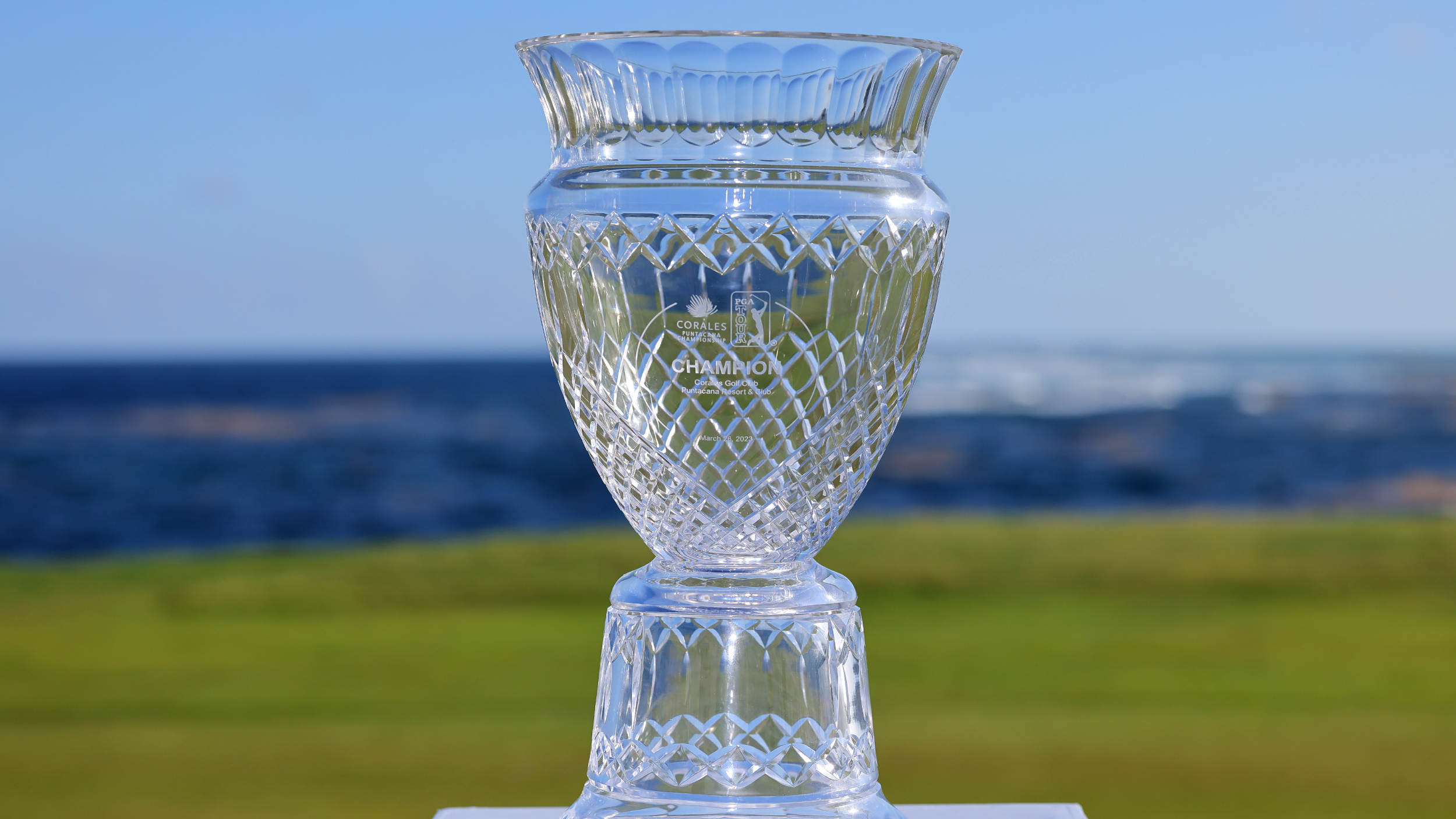Enville Golf Club: A true Midlands gem
The new home of Open Championship Regional Qualifying in the Midlands is Enville Golf Club in Staffordshire. The course has a fascinating history as member John Stephens explains.

Mention the County of Staffordshire and many people immediately think of heavy industry, from the Potteries of Stoke-on-Trent to the innumerable metal-bashing factories of Wolverhampton and the Black Country.
In point of fact though, it is generally a very rural county and has many attractive features. In the north, Leek provides a gateway to the bleak high moorland of the Peak District, whilst the south-west corner is largely devoted to lush rich farmland interspersed near the villages of Kinver and Bobbington, with large tracts of heather and birch clad common-land and, in recent years, the inevitable pine-forests.
Given this type of countryside, and the insatiable appetite of the nearby towns and cities for golf, it is perhaps little wonder that this area can boast a golf club which, for the sheer delight of the surroundings, can rival anything on offer at Wentworth or Woburn.
Into the bargain, those who can tear themselves away from the scenic distractions, and concentrate on the matter in hand, will find that Enville Golf Club is a very good test of golfing skill, and doesn?t take any prisoners.
Opened in 1935, Enville was, and in some respects still is, a typical product of its time. Many of the tees feature a ?carry? of well over 100 yards, with a sea of dense heather and rough to get over before reaching the fairway, and many a ball has been lost forever after a flight of no more than a few yards.
On reaching the business end, life can be just as difficult because many of the greens, true to their 1930?s heritage, are long and narrow, with bunkers down each side. Seeing no trouble in front, many are tempted to go for a very narrow target. But when their shot slides up the outside of the green, they are left with a difficult chip over a bunker to a green which is now frighteningly short. This is definitely a course where you need to carry a lob-wedge.
As the course matured so the club prospered, the members enjoying something of a pioneering spirit which made things all the more enjoyable. Perhaps nowhere was this more evident than in the original clubhouse which was very basic.
Get the Golf Monthly Newsletter
Subscribe to the Golf Monthly newsletter to stay up to date with all the latest tour news, equipment news, reviews, head-to-heads and buyer’s guides from our team of experienced experts.
It was the clubhouse which saw the first great change, for although many loved its homeliness, the simple fact was that by the 1960?s it simply could not accommodate the steadily growing membership. By co-incidence, a farmhouse adjacent to the course became vacant at that time, and the club was able to negotiate a lease with its landlords, Enville Estates, so that the farmhouse became the new clubhouse.
Even bigger changes were soon to follow however, for some adjoining land also became available and, in the mid-70?s, the course was able to be extended to twenty-seven holes. The new nine were revolutionary, for they were cut through mature woodland, each hole seeming to be completely cut off from the next and, although the ?carries? on the new holes were comparatively tame, they were more than made up for by the plethora of trees and a ball-consuming lake. Although a few handicaps suffered at first, the members soon came to adapt to, and love, this new style of golf course, as did the many visitors who soon began to flock to it.
The achievements of Tony Jacklin in the early ?70?s sparked an unprecedented boom in British golf. Here was an ordinary working-class lad who had invaded the seemingly elite world of golf and reached the top, ?.. if he could do it, then why not anybody else?
Thus it was that despite its increased size, Enville found itself under pressure to accommodate all who wanted to play. Again a happy solution presented itself and it was Enville Estates who provided the solution.
Adjacent to the existing course they had another tract of forest which, after selected harvesting, they were prepared to make available to the club for development as a further nine holes, and thus it was that by 1982 the club could boast thirty-six holes.
The logical thing was to divide these into two separate 18-hole courses and suggestions were invited as to the names of the courses.
It being 1982, and with the Falklands War hitting the headlines, a number of patriotic ideas were put forward, such as Invincible, Canberra, Harrier, and Vulcan, but in the event the members went for the more local choices of Highgate, after the adjacent common, and Lodge, after the Lodge Wood, which now formed part of the course.
Both courses are similar inasmuch as both are a mixture of about half the old heathland course and half woodland, thus offering good variety, but each has its own distinctive character.
The Highgate Course is slightly the longer of the two, a 6370 yard par 72 off the ?everyday? yellow tees, and in general terms it is ?a driver?s course?. Provided that you can hit it reasonably straight, and that you are alert for hidden dangers such as ditches, distance is a distinct advantage on Highgate. Indeed, on the 581 yard 9th it is essential, because this dogleg par 5, one of the longest holes in the Midlands, requires three text-book shots to reach the elevated green on which many players are thankful only to two-putt.
Having said that distance is an advantage, Highgate does not give in that easily, for the real card-wrecker is the 5th, a seemingly innocuous short hole of a mere 158 yards. However, the green is very narrow, with cavernous bunkers in front and to the sides, a vicious slope in the middle, and little or no ?bale-out? area. Since the green-keepers often seem to delight in placing the hole on the slope, it?s a certain fact that the 5th does not play anywhere as easily as its stroke-index would suggest.
The Lodge Course is a somewhat different proposition. At 6142 yards it is a mere par 70, but on this course there are comparatively few holes on which distance is a real advantage, and indeed there are a few where it is all too easy to drive yourself into trouble.
It is instead ?a thinkers course?, and the question is often not ?how far can I hit it??, but rather ?where do I want to put it so as to be in prime position for the next shot??
Although not mountainous, it is noticeably more undulating, so that as well as the normal hazards of the golf-course, the player must cope with tiring legs as he nears the end of the round.
Whilst the course has many holes which can trip up the unwary, it is undoubtedly the 12th which provides the greatest challenge. From the tee you can actually see the flag some 406 yards away, but in practice it plays as a double-dogleg, requiring a classic draw over a bank into a diagonal valley, and then a deliberate fade from a side-hill lie to a hilltop green, which is never quite the distance you thought it was.
This is one of those holes where you?re always very pleased to escape with a mere bogey, and indeed ?the Lodge? is one of those courses where, if you can play to your handicap, you?ve had a pretty good day.
It was at about the time of the course extension that the club acquired its large practice-ground, and if it had not been so serious, the manner of its acquisition would have been almost farcical.
At that time ?stubble-burning? was an accepted farming practice following the harvest, and in due course the field next to the car-park was given the treatment. Unfortunately, the wind changed direction and the perimeter hedge was soon blazing fiercely and so were some cars parked next to it!
It could not be allowed to happen again, and as part of a negotiated settlement the club took over the lease of the offending field and it became a practice-ground which is the envy of many other clubs. Coincidentally, at the time of writing, another neighbouring field has been acquired and the practice-ground is being extended still further.
After many years of heavy wear it had to be admitted that by the late 1990?s the courses were in need of some rejuvenation and the Management Committee decided that ?in for a penny, in for a pound?. Extensive maintenance work was undertaken and the inevitable inconvenience and expenditure tried the patience of quite a few of the members. However, effort is now beginning to reap it?s reward, for the club has emerged from the upheaval with its reputation enhanced.
It has already been the venue for the Staffordshire Open Championship, the English Senior Ladies Golfing Association annual competition, and other prestigious events, and, perhaps the jewel in the crown, from 2007 it is to be the Midlands Regional Qualifying course for the Open Championship.
Win, lose, or draw, you will be sure to enjoy your golf at Enville, and you have the great consolation that even if you are not having the best of games, you can step back for a moment and enjoy some truly superb surroundings.
For more information visit www.envillegolfclub.com
-
 JM Eagle LA Championship Prize Money Payout 2025
JM Eagle LA Championship Prize Money Payout 2025The LPGA Tour heads to California for the JM Eagle LA Championship, where the largest prize money payout of the season so far is on the table
By Mike Hall
-
 Corales Puntacana Championship Prize Money Payout 2025
Corales Puntacana Championship Prize Money Payout 2025The PGA Tour’s latest opposite field event features an attractive prize money payout and some former champions in the field
By Mike Hall